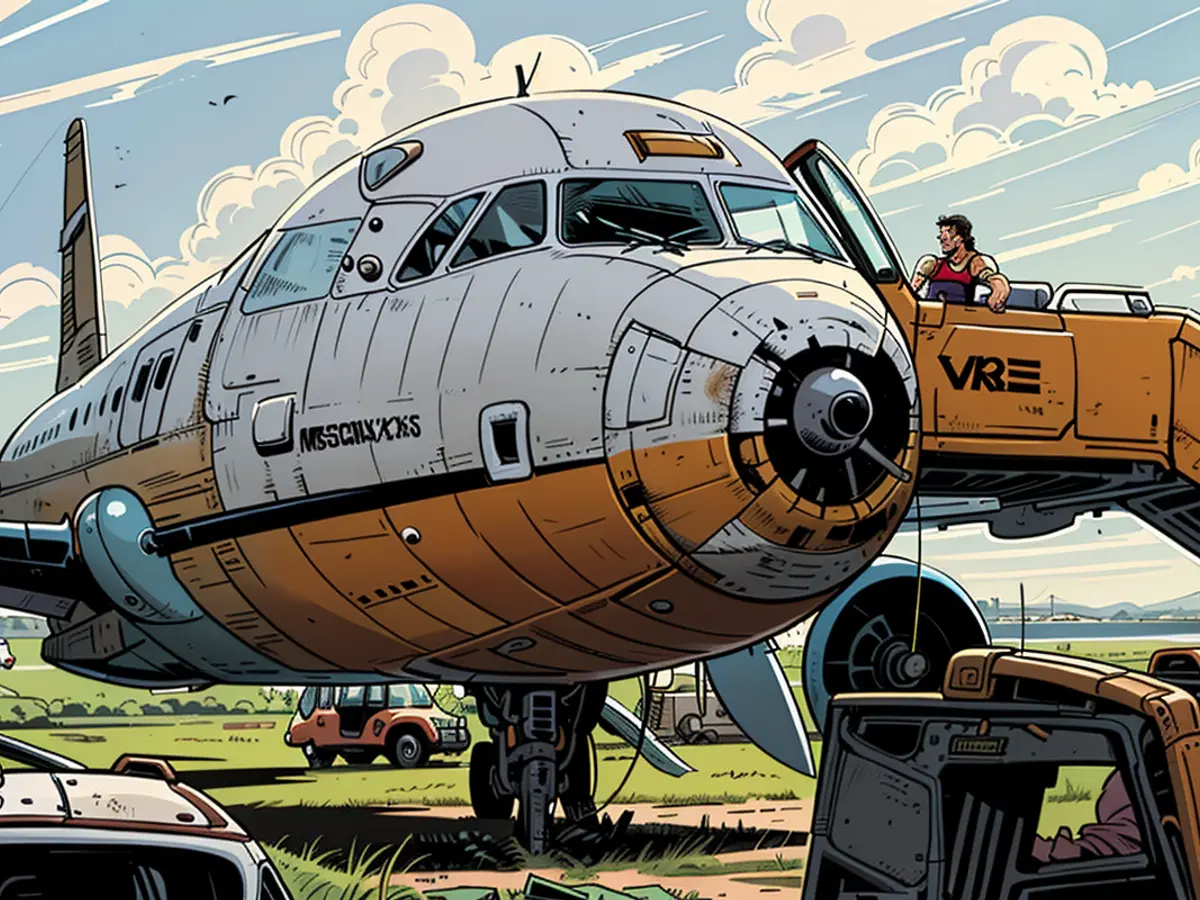Air traffic controllers expressing doubts about the data provided by the pilots due to hail conditions.
In a twist of events, all parties are dealing with the aftermath of a tricky situation, but the authorities are left with questions. How on earth did a devastating hailstorm manage to cause such heavy damage to an Austrian Airlines Airbus? Did the weather radar miss some crucial information? Flight safety and pilots are at odds about this.
Recent news has the public buzzing over the chaotic flight of an Austrian Airlines plane through a hailstorm, which left the Airbus A320's nose and cockpit windows damaged during its descent into Vienna. Despite activating an emergency signal, the crew managed to land the plane safely.
Since the incident, the media and commentators have been questioning why the aircraft was navigated through the hail. According to Austrian Control, they had warned of potential hail danger in the flight area and time frame for the Austrian Airlines (AUA) flight from Mallorca. The cockpit crew, however, claimed they couldn't see the thunder cell on the weather radar.
The responsibility for the chosen flight path falls on the pilots, as per Austro Control. The airline, for its part, remains mum on ongoing investigations, stating that they await the investigation results. An internal investigation by the Austrian Airlines is already underway, and the Federal Safety Investigation Authority has initiated an external examination.
Co-pilot took the reins
There has been speculation about the captain being absent from the cockpit during the incident, with a less experienced co-pilot at the helm. The AUA has chosen to keep silent on this matter. However, they emphasize that both individuals are well-experienced overall and have plenty of flight hours on the A320 type in their respective roles.
As is standard procedure after such incidents, the cockpit crew has been temporarily stood down. Based on the analysis of flight data and initial findings, further training or briefing sessions may be arranged for the crew. Once these steps have been taken, the pilots will be cleared to join flight operations again.
Read also:
- The extreme weather conditions during the flight from Majorca to Vienna, which included a hailstorm, have raised concerns within the Airbus Group about the aircraft's resilience to such extreme weather events.
- Despite the chaotic circumstances, international aviation safety organizations are monitoring the situation closely, keeping an eye on any potential lessons that can be learned for future flight operations.
- As part of its commitment to ensuring flight safety, Airbus Group is collaborating with Vienna International Airport and Austrian Airlines to conduct a comprehensive investigation into the incident.






